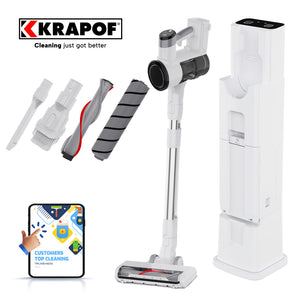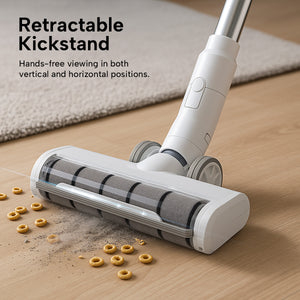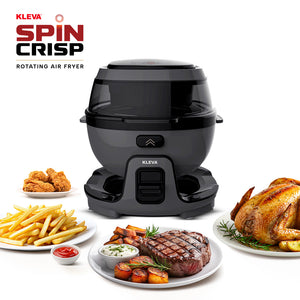
Baseboards, the trim that goes along the bottom of your walls, are prime spots for dust and dirt accumulation. This build-up dulls the appearance of your home and can contribute to poor indoor air quality. This blog post will guide you through the best way to clean baseboards effectively, so you don’t need to worry about dust and other allergens.
What you need to clean baseboards
Before you get started cleaning baseboards, you need to gather a few supplies. These include:
- A vacuum cleaner with a brush attachment
- A bucket
- Warm water
- Dish soap
- Microfibre cloths
- Duster
- Sponge
- A soft-bristle toothbrush (optional)
- Cotton swabs (optional)
What to do before cleaning baseboards
In preparation for cleaning baseboards, it is recommended to first move furniture away from the walls. This creates easy access to baseboards, ensuring a thorough cleaning process. Additionally, to safeguard the floor from any potential drips or splatters from the cleaning solution, consider laying down a drop cloth or placing towels on the floor.
How to clean a baseboard
Learning how to clean baseboards effectively should be an integral part of your home cleaning routine. Here are some easy steps to help you get started:
1. Remove loose dust and dirt with a vacuum cleaner and a duster
The first step in cleaning baseboards is to remove loose dust and dirt. Dust and cobwebs can accumulate on baseboards over time, creating a barrier that may hinder the cleaning solution from penetrating the surface. By removing this layer of dust first, you allow the cleaning solution to make direct contact with the baseboards.
Microfibre cloths work well for trapping dust. Wipe along the length of the baseboards, applying gentle pressure to pick up dust. For hard-to-reach areas or detailed moulding, consider using a thin, flexible dusting wand or a cotton swab.
If you have a vacuum cleaner with attachments, use the soft-bristle brush attachment to clean baseboards. Run the brush along the baseboards, making sure to reach the corners and edges. This method not only removes loose dust but also helps capture finer particles.
Inspect the corners and crevices for cobwebs. Gently sweep a duster or a soft brush over these areas to remove any cobwebs. A vacuum with a crevice tool can also be effective in reaching and removing cobwebs from tight spaces.
2. Prepare your cleaning solution
Next, prepare a simple cleaning solution. Fill your bucket with warm water and add a few drops of dish soap. You want enough soap to create suds but not so much that it leaves a soapy residue on your baseboards.
3. Wipe down your baseboards
Dip your soft cloth or sponge into the cleaning solution, then wring it out so it's damp but not dripping. Wipe down your baseboards, paying special attention to any spots with built-up grime. If necessary, use a soft-bristle toothbrush to scrub these tough spots for clean baseboards.
4. Dry your baseboards
After you've wiped all your baseboards, go back with a dry towel and dry them off. This step is crucial to prevent water from soaking into your baseboards and causing damage.
5. Detail cleaning
For the corners and crevices that are difficult to reach with a cloth or sponge, use cotton swabs. Dip a cotton swab into your cleaning solution, then use it to clean these hard-to-reach spots.
The best way to clean baseboards with stubborn stains
When it comes to cleaning baseboards with water stains, pet stains and other marks, addressing each type with targeted solutions is key to achieving optimal results. Here are some tips to help you clean baseboards that are more challenging:
Scuff marks
For scuff marks, a simple eraser can work wonders. Gently rub the scuff mark with the eraser until it lifts off. Alternatively, mix a small amount of baking soda with water to form a paste. Apply the paste to the scuff mark and gently scrub with a soft cloth.
Crayon marks
Crayon marks can be stubborn, but they can often be removed with a hairdryer. Warm the crayon marks with the hairdryer to soften the wax, then wipe away with a clean cloth. If residue remains, use a small amount of non-gel toothpaste or a mixture of white vinegar and water to gently scrub the area for clean baseboards.
Pet stains
Pet stains may require a different approach. Start by blotting up any excess moisture with a paper towel. Mix a solution of equal parts white vinegar and water. Dampen a cloth with the solution and blot the stain, working from the outer edges toward the centre. For persistent pet odours, sprinkle baking soda on the stain, let it sit for a few hours and then vacuum it up.
Water stains
Cleaning baseboards with water stains can be done by mixing equal parts white vinegar and olive oil. Apply the mixture to the water stain and let it sit for a few minutes. Gently rub the area with a soft cloth, and the stain should start to fade. Polish the baseboard with a clean, dry cloth afterward.
Grease stains
Grease stains may be treated with a mixture of dish soap and warm water. Apply the solution to the stain and gently scrub with a soft brush or cloth.
Rinse the area with a clean, damp cloth and pat dry.
Always test any cleaning solution on a small, inconspicuous area of the baseboard first to ensure it doesn't cause damage. Additionally, when cleaning, avoid excessive moisture to prevent warping or damage to the baseboards.
Tips on how to maintain clean baseboards at home
Maintaining clean baseboards on a regular basis involves adopting preventive measures to minimise stains and marks. Here are some tips to keep your baseboards looking pristine:
- Dust baseboards regularly using a dry microfibre cloth or a duster. This prevents the accumulation of dust and dirt, reducing the likelihood of stains.
- Place doormats at entryways to trap dirt and debris from shoes. This simple step can prevent the transfer of outdoor grime onto your baseboards.
- Be cautious when cleaning nearby surfaces with water to avoid splashing onto the baseboards. Water can cause stains and damage, so use targeted cleaning methods when cleaning baseboards.
- Install furniture pads or bumpers on the legs of chairs and tables to prevent scuff marks and scratches when furniture is moved
- Install clear plastic or adhesive baseboard protectors, especially in high-traffic areas or places prone to scuffs. These act as a barrier against daily wear and tear.
Browse our cleaning tools at Kleva Range to help you clean baseboards
Ready to make baseboard cleaning a breeze? Shop our cleaning supplies at Kleva Range. From innovative dusters and high-quality microfibre cloths to versatile vacuums, we have everything you need to keep your house spotless. Reach out to our team if you need help placing an order or have any questions about our products!
 Discounts are applied at checkout
Discounts are applied at checkout





















